In the ever-evolving landscape of healthcare, the role of medical machined parts stands as a testament to precision engineering's indispensable contribution. As the CEO of Richconn, I am thrilled to guide you through an extensive exploration of these critical components. This comprehensive journey will unravel the intricacies of medical machined parts, from their classifications and manufacturing processes to applications and adherence to industry standards.
Medical machined parts are the unsung heroes of healthcare, powering the functionality of devices ranging from diagnostic tools to life-saving equipment. These precision-engineered components, often unseen by the naked eye, play a pivotal role in the reliability and accuracy of medical instruments.
To provide a deeper understanding, let's categorize these parts based on their applications. This classification may include components utilized in imaging devices, surgical instruments, or even prosthetic devices. Each category demands specific features and materials to meet the unique requirements of the medical field.
Table 1: Classification of Medical Machined Parts
| Category | Examples | Key Features |
|---|---|---|
| Imaging Devices | X-ray components, MRI parts | Non-magnetic, high-density materials |
| Surgical Instruments | Forceps, scalpel handles | Biocompatible, corrosion-resistant |
| Prosthetic Devices | Joint components, brackets | Lightweight, durable, body-friendly |
Understanding these distinctions sets the stage for a more profound exploration of the world of medical machined parts.
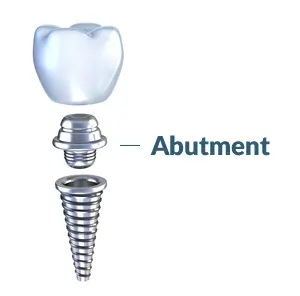
Delving further into the classifications of medical machined parts, it's crucial to grasp the inherent characteristics that make each component unique. This understanding serves as the foundation for precise manufacturing and quality control.
Materials utilized in medical machined parts significantly impact their performance and longevity. Common materials include stainless steel, titanium, and various polymers. The choice of material depends on factors such as biocompatibility, corrosion resistance, and the specific application within the medical device.
Table 2: Materials Used in Medical Machined Parts
| Material | Application | Key Properties |
|---|---|---|
| Stainless Steel | Surgical instruments | Corrosion-resistant, sterilizable |
| Titanium | Orthopedic implants | Biocompatible, lightweight |
| PEEK (Polyether Ether Ketone) | Various applications | Biocompatible, chemical resistance |
The precision demanded in medical machined parts necessitates a meticulous approach to dimensions and tolerances. Whether it's a micro-scale component for a minimally invasive device or a larger part for orthopedic applications, adherence to specified tolerances is paramount.
Table 3: Tolerance Standards for Medical Machined Parts
| Application | Tolerance Range | Critical Dimensions |
|---|---|---|
| Minimally Invasive Devices | ±0.005mm | Micro-scale features, tip dimensions |
| Orthopedic Components | ±0.1mm | Implant fit, joint articulation |
| Diagnostic Equipment | ±0.02mm | Sensor alignment, image precision |
By comprehending these classifications and characteristics, one gains a deeper appreciation for the precision demanded in the manufacturing of medical machined parts.
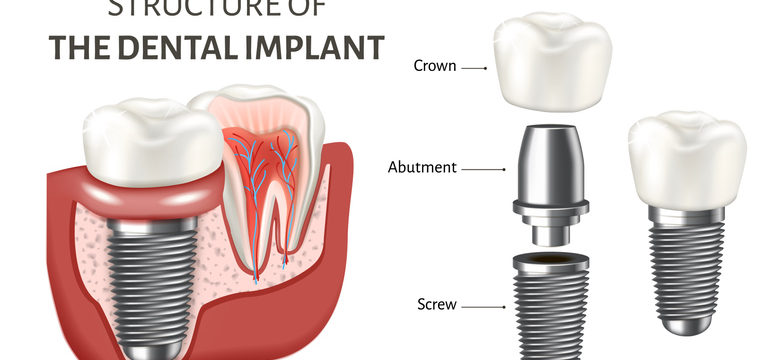
Understanding the intricate steps involved in the manufacturing and processing of medical machined parts is essential to appreciate the precision and quality these components exhibit.
Central to the production of medical machined parts is the utilization of Computer Numerical Control (CNC) machining. This advanced manufacturing technique allows for unparalleled accuracy and repeatability in the production of intricate components. The CNC machining process involves the following key steps:
Before the machining process begins, Computer-Aided Design (CAD) is employed to create a detailed blueprint of the component. This digital design serves as the foundation for the CNC machine's programming.
Selecting the appropriate material according to the component's application, as discussed in the previous section, is a critical initial step. The material is then prepared for machining, ensuring it meets the specified requirements for the medical device.
The CNC machine, guided by the pre-programmed instructions, precisely shapes the raw material into the desired medical component. The process may involve CNC milling, CNC turning, or other machining techniques, depending on the complexity of the part.
Table 4: CNC Machining Techniques in Medical Component Production
| Machining Technique | Application | Key Advantages |
|---|---|---|
| Milling | Complex geometries | High precision, versatility |
| Turning | Cylindrical components | Efficient for symmetrical parts |
| EDM (Electrical Discharge Machining) | Intricate profiles | Precision in complex and hard materials |
Ensuring the quality of medical machined parts is non-negotiable. Rigorous quality control measures are implemented throughout the manufacturing process to guarantee the precision and reliability of each component.
At various stages of production, in-process inspections are conducted to verify that the dimensions and tolerances align with the specifications outlined in the CAD design. Any deviations are promptly addressed to maintain the highest standards.
Table 5: Key In-Process Inspection Checkpoints
| Inspection Stage | Parameters Checked | Action on Deviations |
|---|---|---|
| CAD Design Verification | Blueprint accuracy, critical dimensions | Adjustments made to the CNC programming |
| Mid-Production Inspection | Dimensional accuracy | Tool adjustments or recalibration as needed |
| Final Inspection | Comprehensive component check | Component rejection or re-machining if needed |
Once the components are machined, additional testing procedures are employed to assess factors such as material integrity, surface finish, and, where applicable, functionality within the medical device.
Table 6: Post-Production Testing Parameters
| Testing Parameter | Methods Employed | Acceptance Criteria |
|---|---|---|
| Material Integrity | Non-destructive testing (NDT) | No defects or irregularities detected |
| Surface Finish | Profilometer, visual inspection | Meets or exceeds specified surface finish standards |
| Functional Testing | Assembly into prototype device | Full functionality without issues or abnormalities |
By incorporating these meticulous steps into the manufacturing process, the end result is a medical machined part that not only meets but often exceeds the stringent requirements of the healthcare industry.
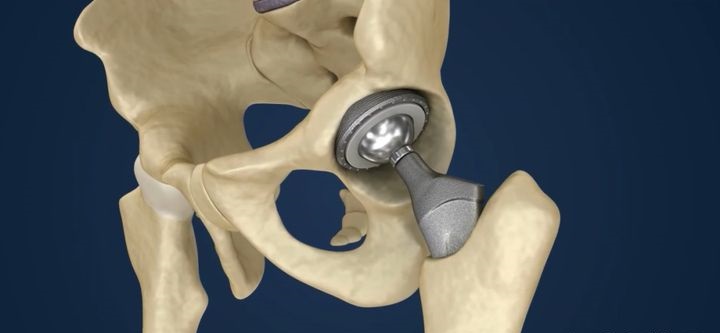
Now that we have explored the intricacies of manufacturing medical machined parts, let's shift our focus to their diverse applications across a spectrum of medical devices. Each category demands unique features and precision, making these components indispensable in modern healthcare.
Medical imaging devices rely heavily on precision-engineered components to capture accurate and detailed diagnostic images. Let's delve into specific examples and the role of medical machined parts within these devices.
X-ray components, such as collimators and tube housings, require materials with high-density and non-magnetic properties. This ensures the accurate focusing and delivery of X-ray beams without interference.
Table 7: Medical Machined Parts in X-ray Machines
| Component | Material Used | Key Functionality |
|---|---|---|
| Collimators | Tungsten, lead | Directing X-ray beams with precision |
| Tube Housings | Stainless steel, ceramics | Containment of X-ray tube and radiation shielding |
In contrast, MRI components must be non-magnetic to prevent interference with the magnetic fields generated during imaging. The utilization of materials like titanium and specific polymers becomes imperative.
Table 8: Medical Machined Parts in MRI Machines
| Component | Material Used | Key Functionality |
|---|---|---|
| Coil Supports | Titanium, PEEK | Providing structural support for imaging coils |
| Casing Components | Non-ferrous alloys | Ensuring non-magnetic properties for safety |
Precision is paramount in surgical settings, where the reliability and functionality of instruments can directly impact patient outcomes. Let's explore the role of medical machined parts in surgical instruments.
Surgical forceps demand a combination of biocompatibility and corrosion resistance. Medical machined parts play a crucial role in achieving the delicate balance required for these instruments.
Table 9: Medical Machined Parts in Surgical Forceps
| Component | Material Used | Key Functionality |
|---|---|---|
| Jaw Components | Stainless steel | Biocompatible, corrosion-resistant |
| Handle Grips | Titanium, medical-grade plastics | Ergonomic design, ease of handling |
The handles of surgical scalpels, often overlooked, require precision in design and manufacturing. Medical machined parts contribute to the ergonomic design and structural integrity of these handles.
Table 10: Medical Machined Parts in Scalpel Handles
| Component | Material Used | Key Functionality |
|---|---|---|
| Handle Body | Titanium, aluminum alloy | Lightweight, durable construction |
| Locking Mechanism | Stainless steel | Ensuring secure blade attachment |
Advancements in prosthetics have been fueled by precision manufacturing techniques. Let's explore the role of medical machined parts in creating functional and comfortable prosthetic devices.
Precision-engineered joint components, such as those used in knee or hip replacements, demand materials that are both durable and biocompatible. Medical machined parts contribute to the longevity and functionality of these prosthetic joints.
Table 11: Medical Machined Parts in Prosthetic Joint Components
| Component | Material Used | Key Functionality |
|---|---|---|
| Articulating Surfaces | Cobalt-chrome alloy | Wear-resistant, mimicking natural joint motion |
| Connection Interfaces | Titanium | Secure attachment to the bone |
Brackets used in prosthetic devices, especially in orthodontic applications, require precise manufacturing to ensure optimal alignment and comfort for the user.
Table 12: Medical Machined Parts in Prosthetic Brackets
| Component | Material Used | Key Functionality |
|---|---|---|
| Bracket Body | Stainless steel | Corrosion-resistant, biocompatible |
| Adjustable Features | Medical-grade plastics | Customization for patient comfort |
By understanding the specific requirements of medical devices within these categories, manufacturers like Richconn can tailor their precision machining processes to meet the diverse needs of the healthcare industry.
Ensuring that medical machined parts meet and exceed industry standards is imperative for both manufacturers and end-users. Let's delve into the certifications and standards that govern the production of these precision components.
The International Organization for Standardization (ISO) developed the ISO 13485 standard specifically for the quality management of medical devices. This comprehensive standard outlines the requirements for a quality management system in organizations involved in the design, development, production, installation, and servicing of medical devices.
Table 13: Key Aspects of ISO 13485 Compliance
| Compliance Aspect | Criteria | Implementation at Richconn |
|---|---|---|
| Document Control | Controlled documentation for processes | Electronic document control system |
| Risk Management | Identification and mitigation of potential risks | Regular risk assessments during production |
| Process Validation | Ensuring consistency and reliability in processes | Validation protocols for CNC machining processes |
| Traceability | Tracking and documenting the life cycle of each product | Serialized tracking for each machined part |
| Corrective and Preventive Actions | Systematic handling of non-conformities | Root cause analysis and continuous improvement |
In the United States, compliance with the Food and Drug Administration's (FDA) regulations outlined in 21 CFR Part 820 is crucial. These regulations, often referred to as Current Good Manufacturing Practice (CGMP), set forth the requirements for the methods used in, and the facilities and controls used for, the design, manufacture, packaging, labeling, storage, installation, and servicing of all finished medical devices.
Table 14: Implementation of CGMP at Richconn
| CGMP Aspect | Criteria | Implementation at Richconn |
|---|---|---|
| Design Controls | Ensuring that medical devices meet specified requirements | Robust design control processes from concept to production |
| Device Master Record (DMR) | Comprehensive documentation of device specifications | Maintaining detailed DMRs for every machined part |
| Complaint Handling | Systematic approach to handling customer complaints | Establishing a dedicated team for complaint resolution |
| Quality System Regulation (QSR) | Adherence to general quality system requirements | Routine audits and inspections to ensure compliance |
By strictly adhering to these standards, Richconn ensures that every medical machined part not only meets but surpasses the expectations of regulatory bodies, guaranteeing the highest level of quality and safety for end-users.
In the intricate realm of medical machined parts, precision is not just a requirement but a commitment to the advancement of healthcare. Throughout our comprehensive exploration, we've delved into the classifications, manufacturing processes, applications, and the adherence to industry standards that define these critical components.
As we conclude our journey, it's crucial to highlight how Richconn, as a CNC machining service provider, upholds the highest standards in quality assurance. Our commitment to excellence is reflected in our comprehensive quality management system, which encompasses:
Richconn employs rigorous inspection protocols at every stage of the manufacturing process. From initial design verification to final product inspection, each medical machined part undergoes meticulous scrutiny to ensure adherence to specifications.
Table 15: Richconn's Inspection Protocols
| Inspection Stage | Parameters Checked | Action on Deviations |
|---|---|---|
| Design Verification | CAD accuracy, critical dimensions | Iterative adjustments to meet specifications |
| Mid-Production Check | Tolerance adherence, material integrity | Immediate corrective action or re-machining |
| Final Inspection | Comprehensive component check | Rejection or re-machining if needed |
Richconn fosters a culture of continuous improvement, wherein feedback from inspections, customer interactions, and industry advancements is incorporated into refining our processes. This commitment ensures that we stay at the forefront of precision manufacturing.
Table 16: Richconn's Continuous Improvement Initiatives
| Initiative | Implementation Approach | Impact on Precision Manufacturing |
|---|---|---|
| Employee Training Programs | Ongoing training in new technologies | Enhanced skill set for precision machining |
| Customer Feedback Analysis | Systematic analysis of customer input | Iterative improvements in product quality |
| Technology Integration | Adopting cutting-edge CNC machining technologies | Improved efficiency and precision |
In the realm of medical machined parts, understanding the intricate interplay between pricing and supply chain reliability is paramount. Richconn navigates these factors with a strategic approach that prioritizes both economic efficiency and unwavering dependability.
Understanding the factors that influence pricing is key for manufacturers and customers alike. Richconn considers:
Table 17: Factors Influencing Pricing
| Pricing Factor | Considerations | Richconn's Approach |
|---|---|---|
| Material Costs | Selection of optimal materials | Strategic sourcing for cost-effective materials |
| Machining Complexity | Intricacy of design and manufacturing | Transparent communication with clients |
| Quality Assurance | Stringent quality control measures | Investment in advanced inspection technologies |
Richconn places a premium on a resilient supply chain to guarantee uninterrupted availability of medical machined parts. This involves:
Table 18: Strategies for Supply Chain Resilience
| Supply Chain Strategy | Key Considerations | Richconn's Commitment |
|---|---|---|
| Diverse Sourcing Partners | Multiple suppliers for critical materials | Establishing long-term relationships for reliability |
| Inventory Management | Strategic stockpiling for critical components | JIT inventory practices for efficiency |
| Contingency Planning | Anticipating potential disruptions | Implementing robust contingency plans |
As we conclude our comprehensive exploration, the journey into the world of medical machined parts has illuminated the precision, dedication, and innovation that define Richconn's commitment to healthcare excellence. Whether you are a medical device manufacturer seeking a reliable partner or a professional navigating the complexities of precision engineering, Richconn stands ready to elevate your endeavors.
For a personalized consultation on your precision machining needs or to explore a partnership with Richconn, scroll down to connect with our team of experts. Experience the precision that powers healthcare innovation.
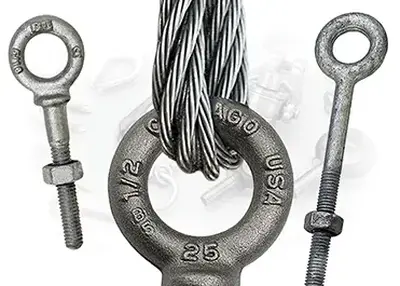 Machined Eye Bolts: Your Ultimate Guide to Quality and SafetyNovember 9, 2023When it comes to precision engineering and safety, there's no room for compromise. Whether you are involved in industrial operations, construction, aerospace, or recreational equipment, the quality of your components is paramount. Enter Machined Eye Bolts, the unsung heroes that bear the weight of your projects, ensuring safety and performance.view
Machined Eye Bolts: Your Ultimate Guide to Quality and SafetyNovember 9, 2023When it comes to precision engineering and safety, there's no room for compromise. Whether you are involved in industrial operations, construction, aerospace, or recreational equipment, the quality of your components is paramount. Enter Machined Eye Bolts, the unsung heroes that bear the weight of your projects, ensuring safety and performance.view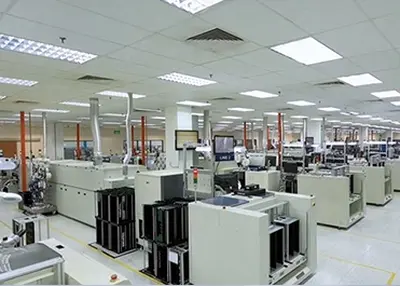 Building Effective Partnerships For Manufacturing StartupsOctober 10, 2023You might have a great idea that leads you to launch a startup. But then you realize you can’t handle it all on your own. You need professional advice, help, and often financial resources.view
Building Effective Partnerships For Manufacturing StartupsOctober 10, 2023You might have a great idea that leads you to launch a startup. But then you realize you can’t handle it all on your own. You need professional advice, help, and often financial resources.view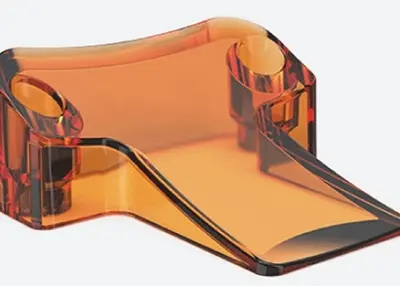 Evaluation of UV-resistant Plastic OptionsOctober 17, 2023Everyone knows that sun protection is important when laying out on the beach or spending a relaxing Saturday afternoon fishing. That's because the sun's ultraviolet (UV) rays can cause serious damage to unprotected skin, resulting in a painful sunburn or worse. Polymers are similarly damaged by UV radiation, albeit more slowly and far less dramatically than in humans.view
Evaluation of UV-resistant Plastic OptionsOctober 17, 2023Everyone knows that sun protection is important when laying out on the beach or spending a relaxing Saturday afternoon fishing. That's because the sun's ultraviolet (UV) rays can cause serious damage to unprotected skin, resulting in a painful sunburn or worse. Polymers are similarly damaged by UV radiation, albeit more slowly and far less dramatically than in humans.view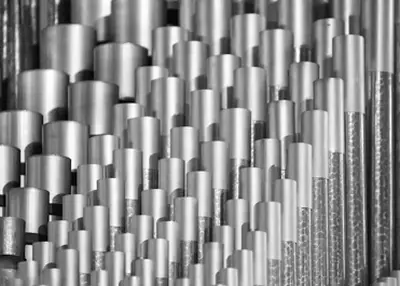 Bead Blasting 101: How Does a Bead Blaster Work?November 2, 2023Bead blasting is an abrasive technique where media is projected onto a surface. How does a bead blaster work to ensure a smooth bead blasting process? Read on.view
Bead Blasting 101: How Does a Bead Blaster Work?November 2, 2023Bead blasting is an abrasive technique where media is projected onto a surface. How does a bead blaster work to ensure a smooth bead blasting process? Read on.view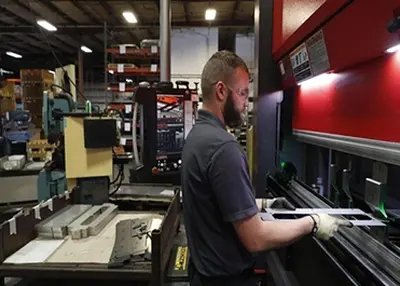 Tips for Selecting Trustworthy CNC Manufacturing Shops for CNC PartsApril 28, 2024This article introduces CNC manufacturing and provides you with professional advice and considerations for selecting reliable CNC manufacturing shops.view
Tips for Selecting Trustworthy CNC Manufacturing Shops for CNC PartsApril 28, 2024This article introduces CNC manufacturing and provides you with professional advice and considerations for selecting reliable CNC manufacturing shops.view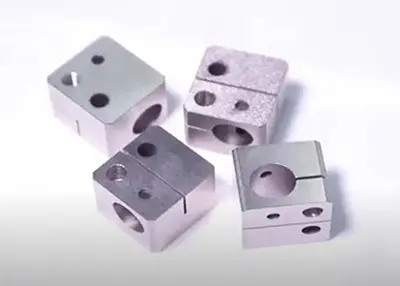 What Are The Characteristics and Features of CNC Machining?June 21, 2022Process concentration, automation, high flexibility, and strong capabilities are the characteristics of CNC machining. The process rules of CNC machining and traditional machine tool machining are gen...view
What Are The Characteristics and Features of CNC Machining?June 21, 2022Process concentration, automation, high flexibility, and strong capabilities are the characteristics of CNC machining. The process rules of CNC machining and traditional machine tool machining are gen...view